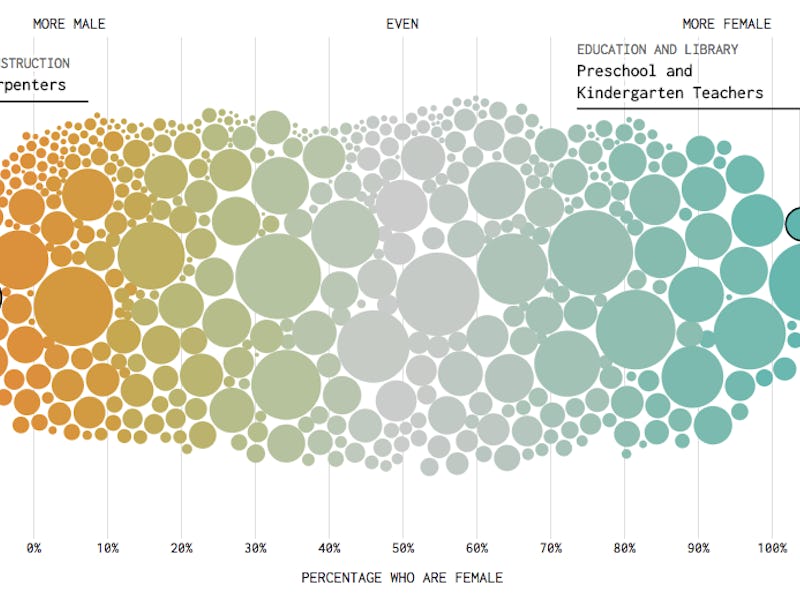Interactive Graph Shows Which Careers Men and Women Choose
In the 1950s, women bartenders were rare as hell. Now, they're taking over.

New data on the American workforce has revealed that our understanding of “gendered” jobs has changed drastically. In the 1950s, for example, a female bartender was statistically very unusual, but in the decades since, that expectation has flipped.
Nathan Yau at Flowing Data compiled the information on employees in different fields, compared it to available data on the workforce in the 50s, and created interactive data visualizations to help you sort through what has changed.
One of the most surprising patterns that emerges when you play around with Yau’s data is that job fields related to futurism, technology, engineering, or web-based platforms have always been occupied primarily by men, and in 2015, they were still held by mostly men by a large margin. The future, at least according to the American workforce, is still in men’s hands.
Today, carpentry is still a predominantly male field, while preschool and kindergarten teachers still tend to be female.
According to Yau’s data, which represents the American workforce in 2015, the occupations most likely to employ men are carpentry, pipe-laying, automotive mechanics, construction laborers, electricians, roofers, masons, and heavy machinery operators. The jobs still predominantly filled by women include preschool and kindergarten teachers, administrative assistants, childcare workers, dental hygienists, stylists, nurses, and housekeepers.
Jobs that were once held mostly by men, which have switched to being held mostly by women, include HR, account executives, door-to-door salespeople, bakers, and travel agents.
These jobs, though they were occupied primarily by men in the 1950s, have shifted over time to employ more women.
The data visualization also includes an interactive component, into which you can plug any occupation you’re interested in. Inverse tried out several futurism-focused lines of work and found that men still occupy all of these positions by a pretty sizable margin. Software developers, for example, are still mostly men.
Software developers have always been primarily men.
Aerospace engineers have also always been traditionally male, and continue to be.
The same goes for astronomers and physicists…
…and for web developers and those working in systems analysis.
See also: The Latest Data on Which Occupations Most Often Lead to Divorce